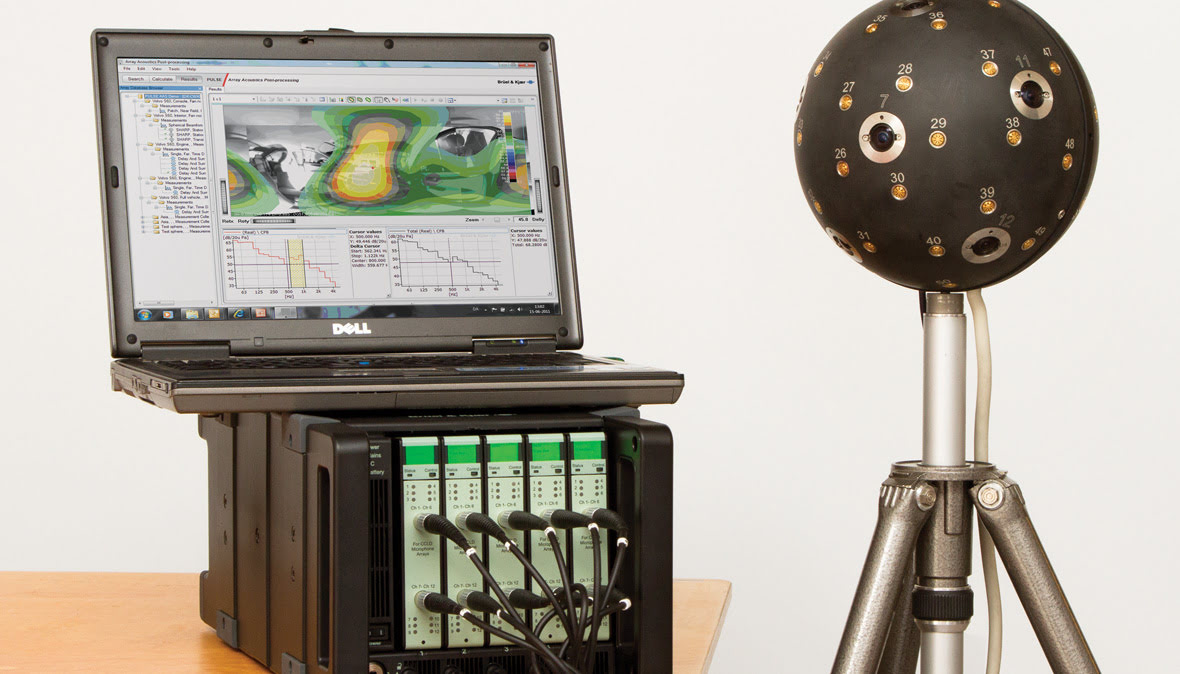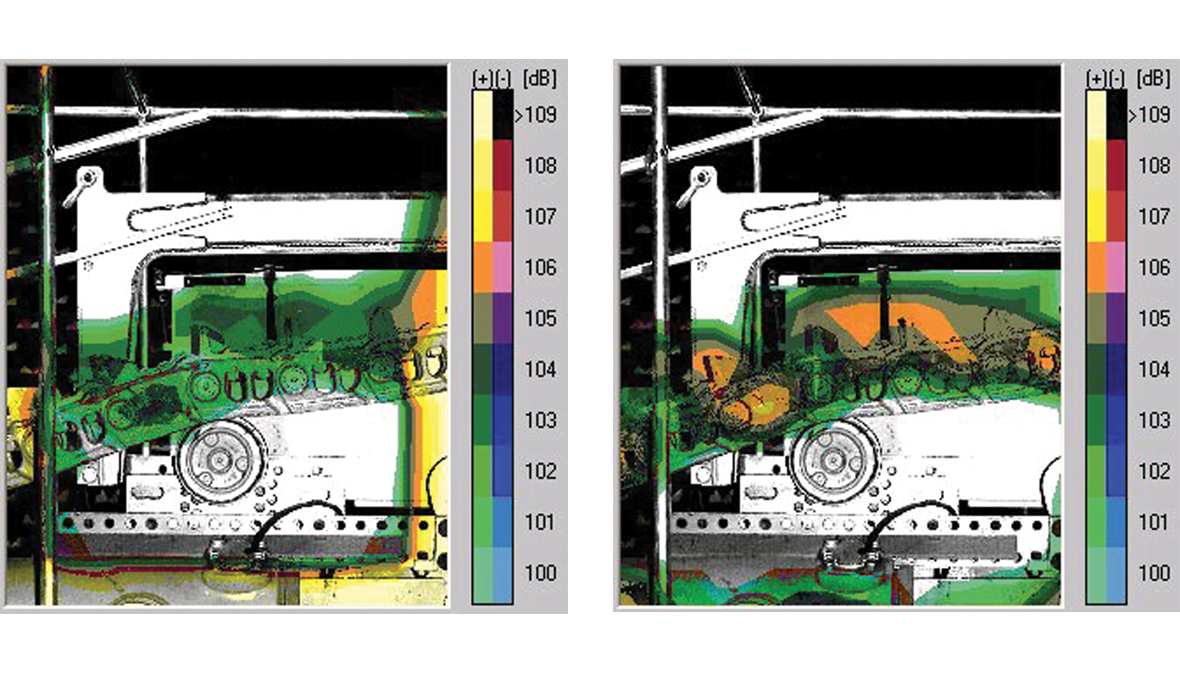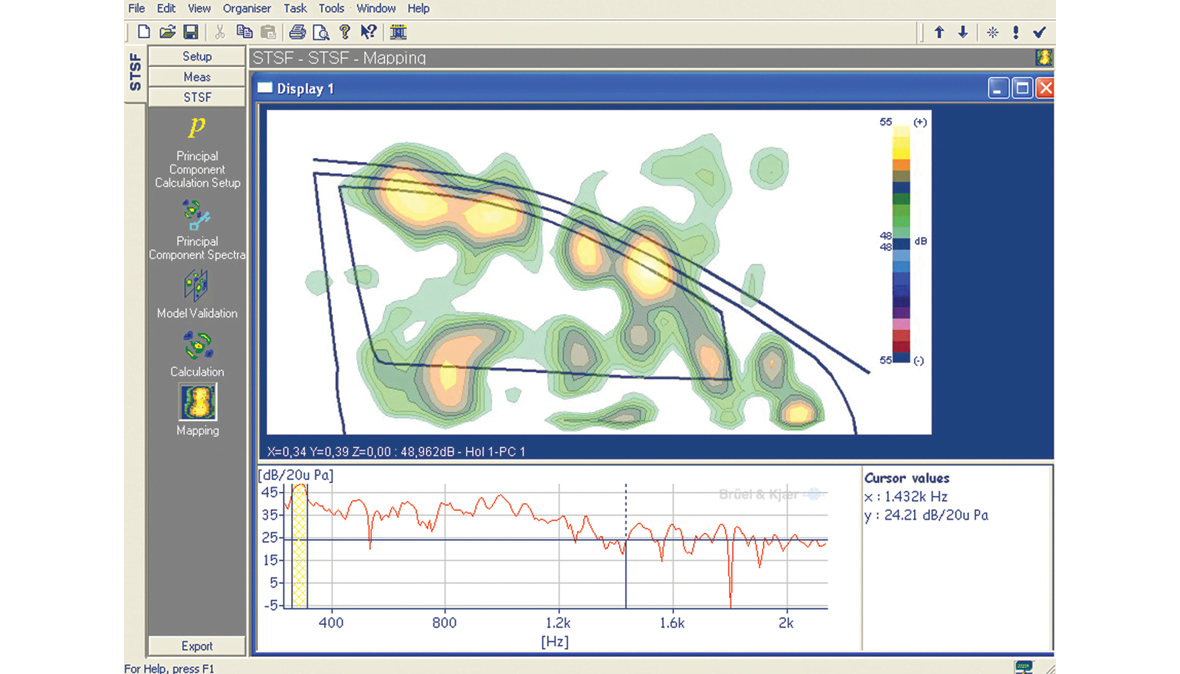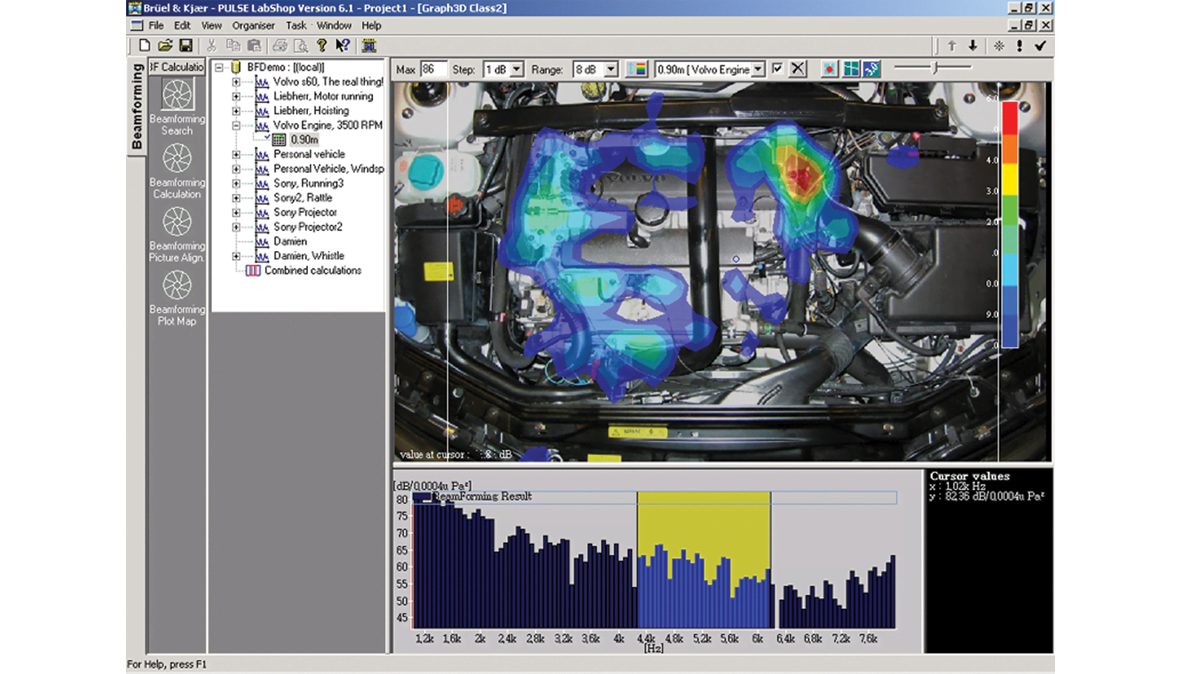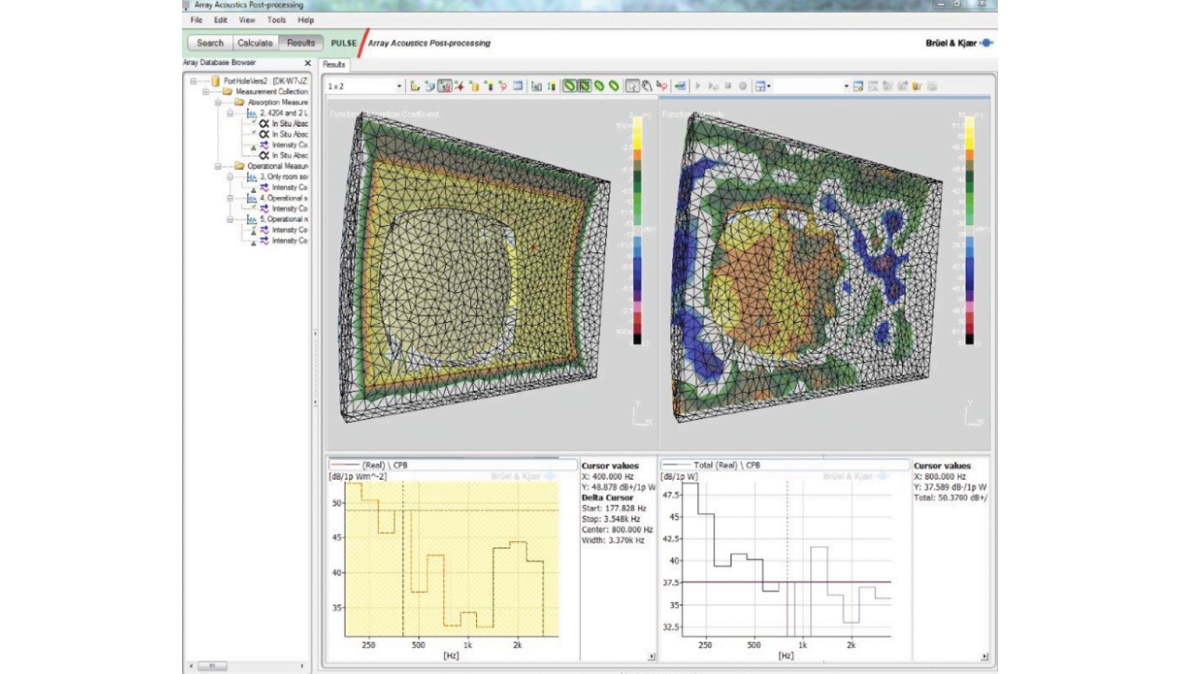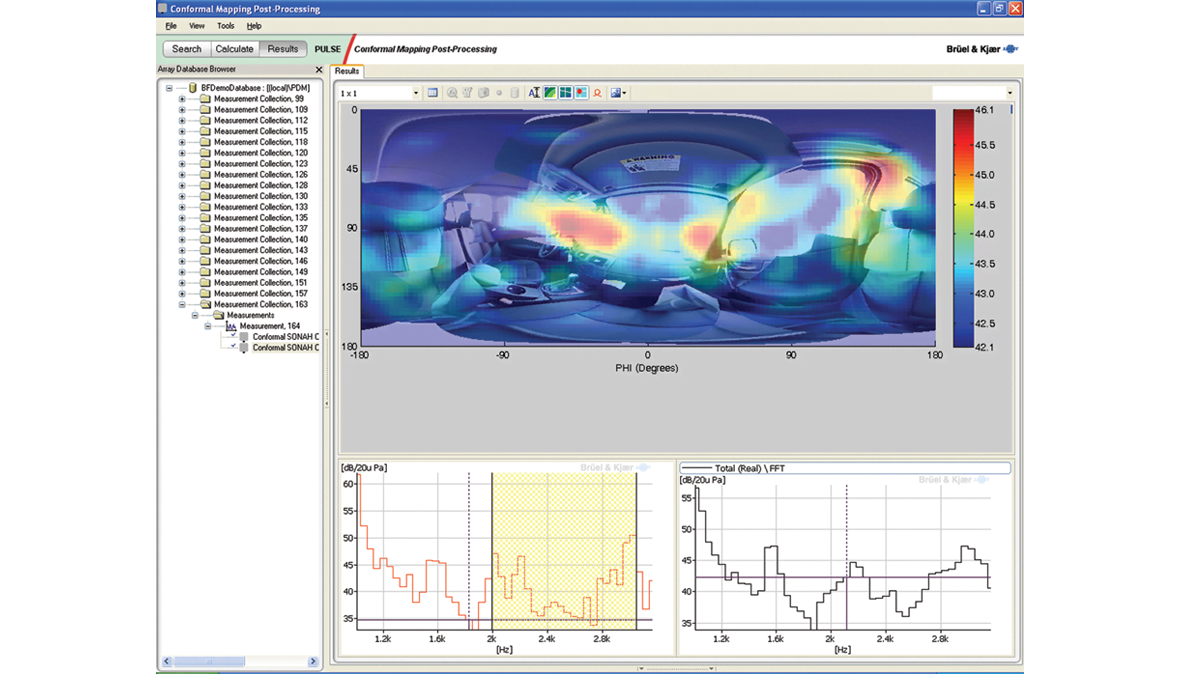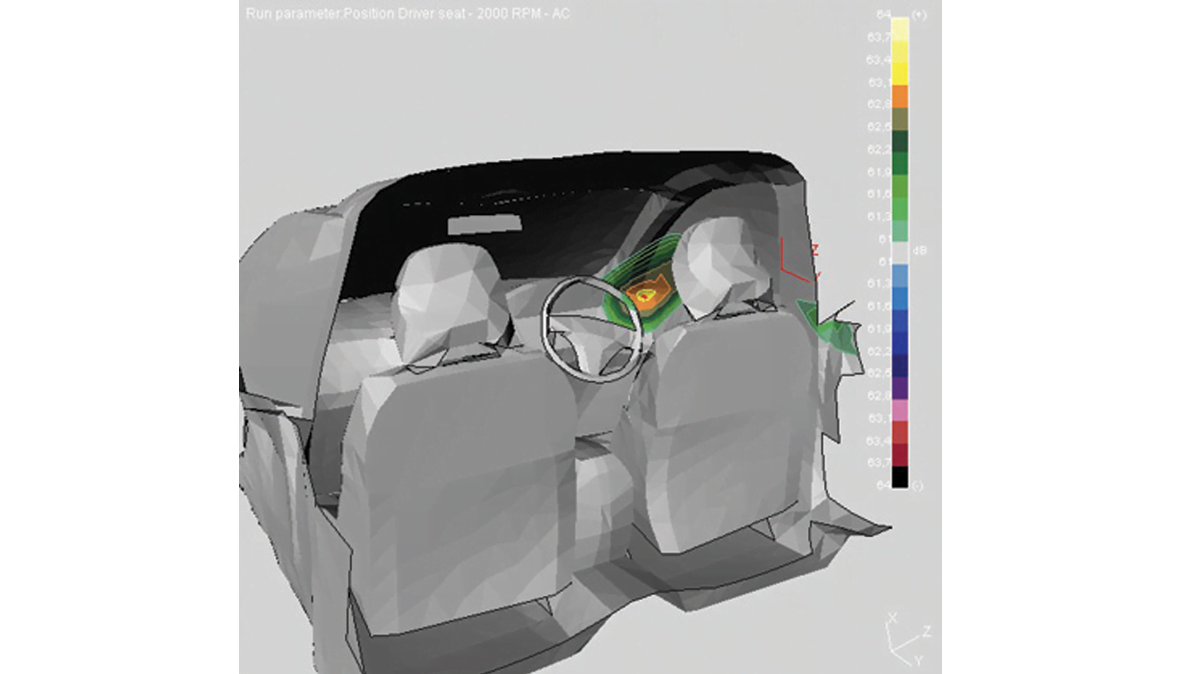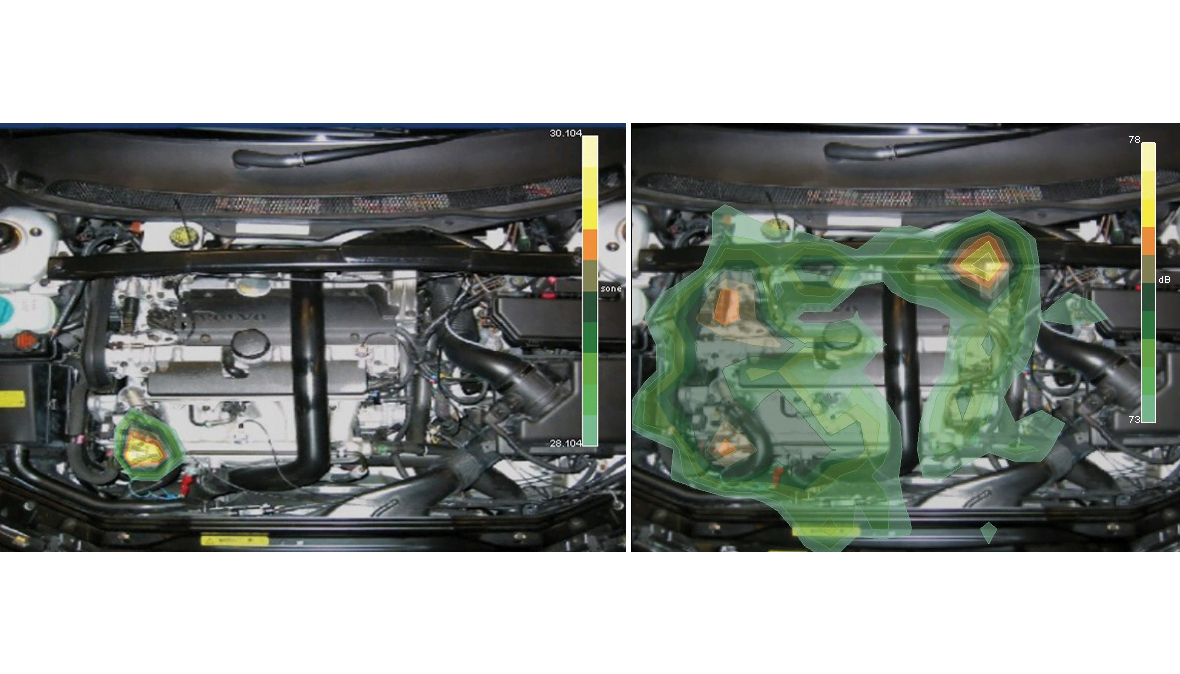TYPES 8606, 8607, 8608
Options for holography and beamforming
Additional capabilities for our array acoustics noise source location and mapping software: Acoustic Beamforming Type 8608, Acoustic Holography Type 8607 and Spherical Beamforming Type 8606.
Richiedi un preventivoThe capabilities of all of our advanced PULSE noise source identification software can be extended with these optional calculation modules.
GENERAL MODULES
- These apply to all beamforming and holography post-processing array acoustic software:
- Quasi-stationary Calculations BZ-5635
- Transient Calculations BZ-5636
- Conformal Calculations BZ-5637
- Sound Quality Metrics BZ-5638
- Create, save, and run your own calculations with External Plug-in Manager BZ-5652
FOR ACOUSTIC BEAMFORMING
The capabilities of Spherical Beamforming Type 8606 and Beamforming Type 8608 can be extended with the optional calculation module:
- Refined Beamforming Calculations BZ-5639 can improve the spatial resolution of the noise maps by a factor of three to six, for objects composed of non-coherent sources. This deconvolution algorithm has been developed with the automotive industry for use in wind-tunnel measurements, and has many outdoor applications such as wind turbines, trains and flyover moving-source beamforming
FOR ACOUSTIC HOLOGRAPHY
The capabilities of our noise source location software, Acoustic Holography Type 8607, can be extended with these optional additions. They all use a hand-held probe with two layers of microphones in conjunction with a positioning system that locates the probe in relation to the object under test.
- Wideband Holography BZ-5644 is our patented calculation method that allows a single measurement at an intermediate distance to cover the combined frequency ranges of statistically optimized nearfield acoustic holography (SONAH) and beamforming – extending the higher frequency limit of holography
- Proximal Holography BZ-5963 enables conformal noise‐mapping of transient events to create animated, 3D noise maps on a 3D model of the test object, using Brüel & Kjær’s equivalent source method (ESM) algorithm
- Panel Contribution BZ-5640 quantifies the contributions to the total sound pressure level at the driver's ear from the various surfaces inside a vehicle, using a volume velocity source to establish the frequency response functions
- Intensity Component Analysis BZ-5641 gives better understanding of the sound field inside cabins and other enclosed spaces, using a volume velocity source and operational measurements to map front source intensity, rear source intensity, scattered intensity, radiated intensity
- In Situ Absorption BZ-5642 helps to map acoustical absorption of various panels to optimize interior trim and detect acoustic leaks

